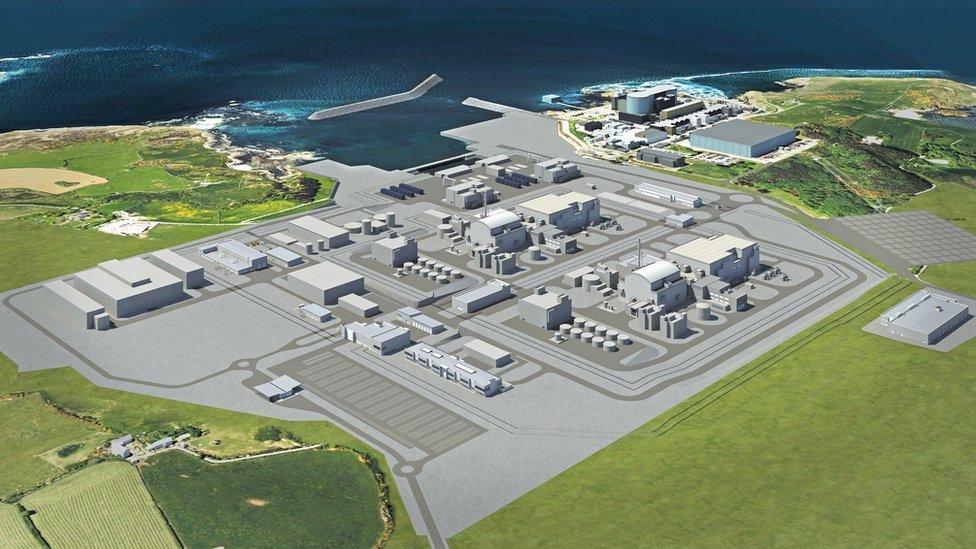Powering Wales: Behind the scenes at the National Grid
- Published
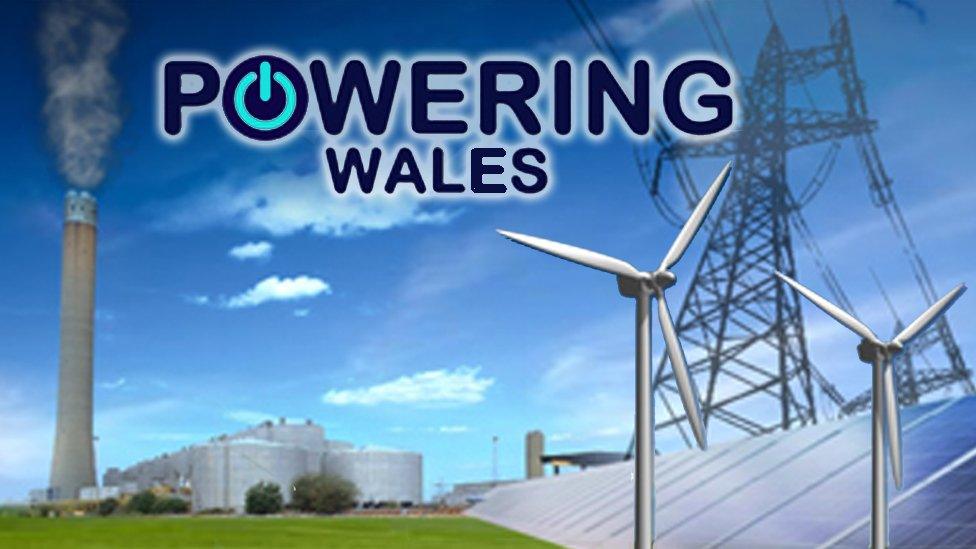
The room is quiet - people are concentrating. I feel like I have to whisper.
I'm standing in the control room of the National Grid - the network that transmits electricity to our homes laid out on a giant screen in front of me.
We've been granted rare access to this top secret location, somewhere in the Berkshire countryside, as part of a series of special reports for BBC Wales.
The idea is to take a closer look at how the energy we rely on will be generated and delivered to us in future and how communities up and down the country play a part in powering Wales.
"These days Wales is a big exporter of power to the rest of the UK," Duncan Burt, head of the Grid's national control room tells me.
On the screen above us, the network looks a bit like the map of the London Tube - each tiny square an individual power station.
Wales accounts for just a small jumble of lines on the right hand side of the display. But as Mr Burt explains, it's a crucial part of the Grid as a whole.
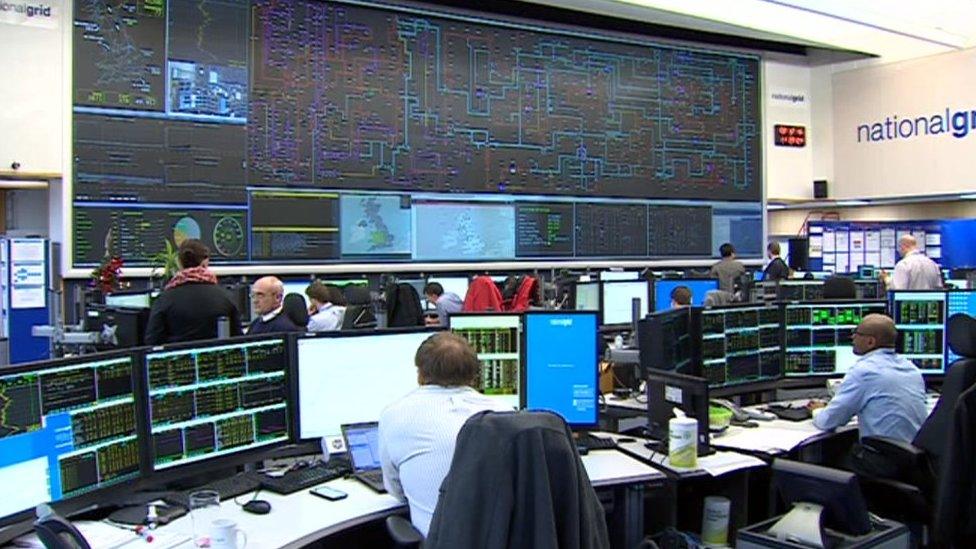
The National Grid control room
We spot Pembroke Power Station, the largest gas-fired plant of its type in Europe, as well as the long-lived coal power station at Aberthaw in the Vale of Glamorgan.
"North Wales too has always been a really important location on the system for us as a big low-carbon hub," Mr Burt goes on to say.
The UK is moving its electricity supply away from old coal and fossil fuel-based power to low carbon generation.
"We've had nuclear generation at Wylfa until recently, we have offshore windfarms connecting here and we have two important pump storage hydro power stations at Dinorwig and Ffestiniog.
"They give us a lot of flexibility that we use to manage supply and demand in real time - particularly for those big events when everyone's watching the television like royal weddings and football matches."
Duncan Burt, head of the National Grid control room, says north Wales has always been an important location
The National Grid is currently consulting on proposals for another connection across Anglesey, in anticipation of a new nuclear plant at Wylfa Newydd.
The prospect of more pylons has sparked debate in a county positioning itself as the "Energy Island", intent on delivering 10% of the UK's electricity needs in years to come.
Renewable energy schemes - like the UK's largest solar farm - are in the pipeline, with wind, tidal and biomass projects also under way.
But proposals for the new £10bn nuclear plant near Cemaes Bay are the vision's central pillar.
It would be the biggest energy infrastructure project Wales has ever seen; the construction of two advanced boiling water reactors capable of delivering electricity to some five million homes for more than half a century.
The developers, Horizon Nuclear Power, have also been consulting local people recently about their plans as they prepare to submit their Development Consent Order, or planning application, next year.
Sacha Davies, the company's Head of Strategic Development told BBC Wales the project was "progressing very well indeed".
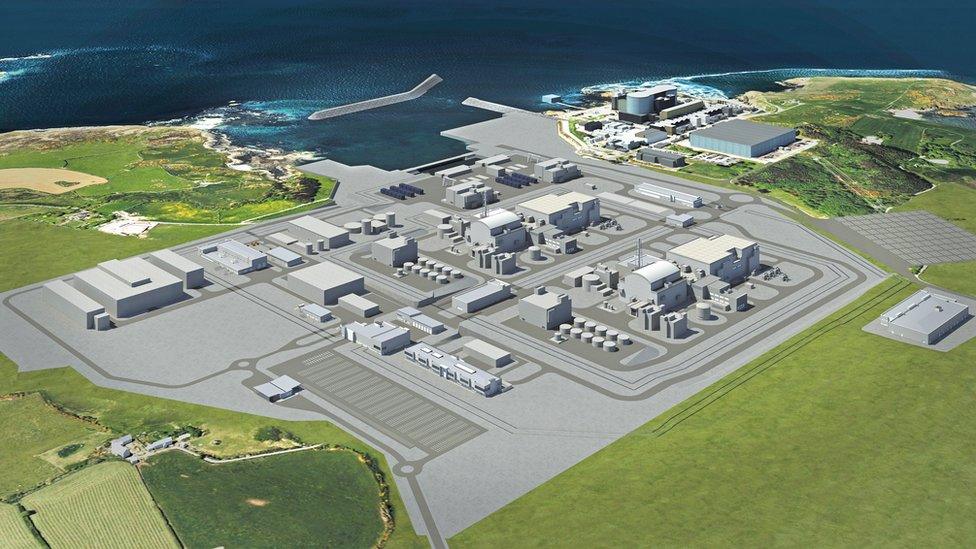
The design of the Wylfa Newydd power station has been refined since Horizon's first stage of consultation
"Arguably we have the best site in Europe here for new nuclear build. The community of Anglesey has been involved with the nuclear sector for the best part of 50 years."
She explained that the key messages coming from the consultation had been calls from locals and businesses for more detailed plans on job creation and skills development as well as the company's efforts to improve and develop the Welsh language and culture.
The UK government's decision to finally back the first of a planned fleet of new nuclear sites at Hinkley Point C earlier this year had given them great confidence, she added.
"We need to be an important part of the energy mix to make sure Wales can keep powering itself but also the UK too. It's good for business, it's good for people, it's important for this country."
Not everyone agrees of course and - as with the pylons - there are those who fiercely oppose this particular future for energy generation in Wales.
Campaigner Robat Idris said the proposed Wylfa Newydd nuclear energy plant would not offer long-term benefits for Anglesey
Robat Idris from campaign group People Against Wylfa B claimed the local economy on Anglesey had been "allowed to stagnate over decades due to a promise that nuclear power would come and save the day".
"There are real concerns coming to the fore now - people are asking about nuclear waste, about the fact the jobs won't mainly be for local people, about how many people will move in to the area."
He said focusing efforts on bringing renewable and community energy schemes to Anglesey would offer more local benefit and jobs.
There's considerable debate then about the desired shape of our energy future, but no doubt that Wales will continue to play an important part in delivering power to the rest of the UK.
As well as nuclear, the potential development of tidal lagoons and other large renewable schemes here would necessitate further changes to the National Grid.
Plenty more to discuss then as we consider what the future holds for those involved in powering Wales.
- Published13 December 2016

- Published12 December 2016
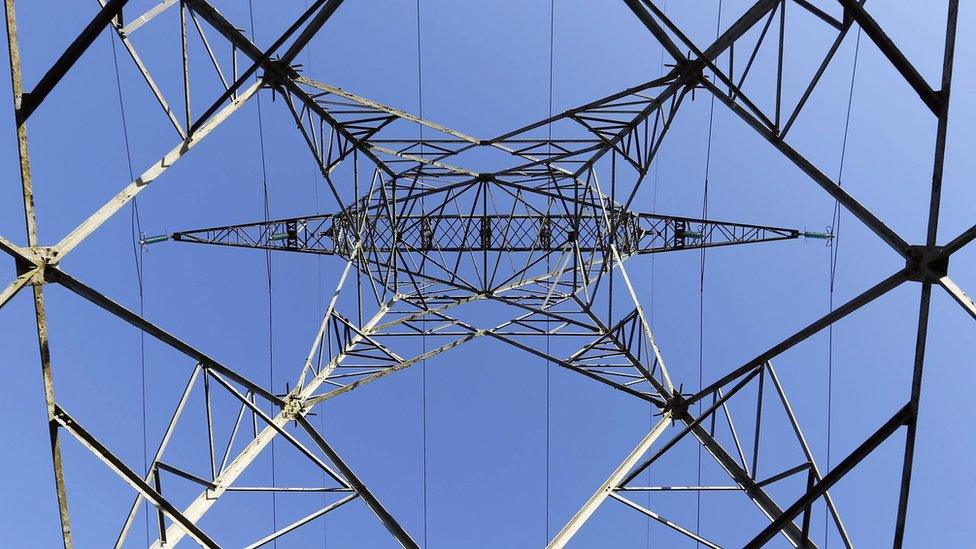
- Published5 October 2016
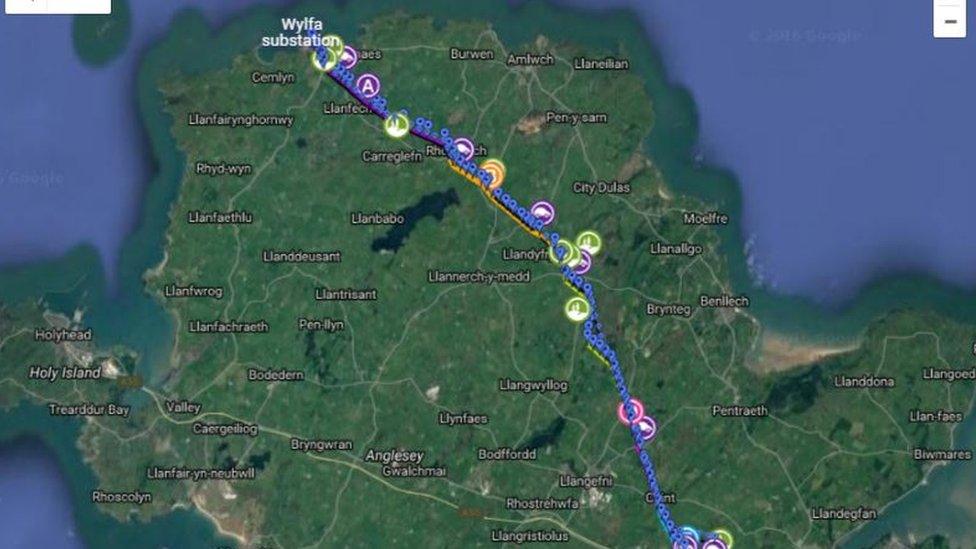
- Published31 August 2016
